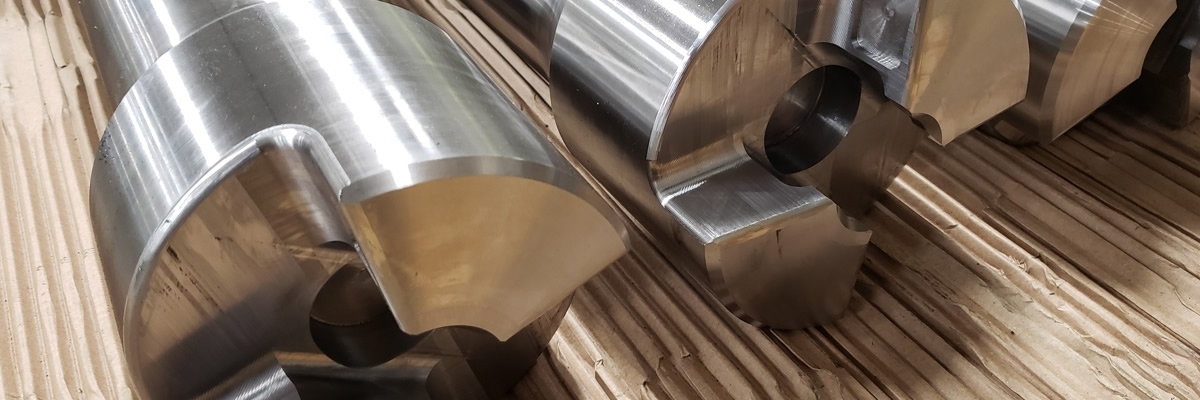Header
Conroe Machine
Crash-Free in Conroe
Texas oil and gas manufacturer uses VERICUT to safeguard its machining operations
Gassed up your car this week? If so, you might want to thank Conroe Machine LLC. That’s because this specialty job shop in Conroe, Texas—among other products—machines most of the components used to build downhole Positive Displacement Motors (PDMs), known in the oil and gas industry as mud motors, which are commonly used for directional drilling of oil and gas wells. And without mud motors, the oil and gas needed to power our vehicles and heat our homes would stay forever underground.
James Wardell gets a little credit, too. The programming technology manager at Conroe Machine, Wardell was part of the team that implemented VERICUT toolpath simulation software, and without VERICUT, the company’s machining operations would be less efficient, less safe, and much less predictable.
“Machining has grown more complex over the years,” he says. “It’s no longer just linear moves and simple arcs. You have dynamic roughing paths, 3D surfacing, simultaneous four and five-axis cutting—you can’t expect a machinist to catch program errors in this situation. That’s why we needed a tool that can verify our NC programs, and give us confidence in advance that everything’s good to go.”
More than mud
As Wardell points out, Conroe Machine produces much more than mud motors. Since 2000, this 160-employee, 65,000 sq. ft. facility in Conroe’s North Industrial Park has machined a wide array of high-precision parts for the likes of Halliburton, National Oilwell Varco (NOV), and Global Drilling Support International. These include subsea components such as stab plates and various control valves, many made from Inconel, Nitronic 50, ToughMet, and other challenging materials, but the company also has extensive fabricating and engineering capabilities.
“We make bearing races, housings, and PDM transmission parts by the hundreds of thousands, but we also do a lot of low-volume and prototype work,” Wardell says. “Much of what we do here centers around the oil and gas industry. After the last downturn, though, we’ve tried hard to diversify our customer base, and have expanded our service offering accordingly.”
Meet the flagship
Part of that expansion was the purchase of a Toyoda SB316YM, a fixed rail bridge-style five-face machining center with 22,000 lbs. of table capacity and 118-inches of X-axis travel. Wardell and others there call it the company’s flagship machine. Just prior to its installation, Conroe Machine switched its programming system to Mastercam, and invested in the previously-mentioned VERICUT software from Irvine, California-based CGTech Inc., a leading provider of numerical control (NC/CNC) simulation, verification, optimization, and analysis software technology for manufacturers.
They had plenty of other reasons to purchase VERICUT. Conroe Machine boasts an impressive array of CNC machine tools, including an Okuma LU45 II four-axis lathe, Doosan DMV 5025 and 3016 machining centers, a 120-inch Mighty Viper 3100 vertical milling center, and more. It was the tremendous crash potential that comes with five-sided machining, though, that helped convince the management team of the necessity for accurate toolpath simulation.
“We also have several automated production cells, with inline inspection and robotic part handling, but it was the bridge mill in particular that got us thinking about VERICUT,” Wardell explains. “We wanted a way to verify that the post-processors on our new CAM system were accurate, and that we could catch any programming errors before they got to the production floor, possibly damaging the most expensive piece of equipment in our shop.”
That was five years ago, and Wardell says VERICUT continues to prove its value every day. “We have not had any crashes due to programming error since implementing VERICUT. We have had a couple missed dimensions here and there—stuff that I might have fat-fingered or forgotten during programming, but that’s why I started using the AUTO-DIFF function in VERICUT to make sure everything is where it’s supposed to be, and that I didn’t miss anything.”
Faster setups, less hassle
Aside from crash avoidance, VERICUT also reduces setup times. Because the operators can see the entire program in advance, there’s less guesswork and less apprehension. Wardell hasn’t tracked how much time the company has saved, although he says it’s significant. “It simply takes a lot longer on an unverified program. The operator has to meticulously dry run each line, hands on the override and feed hold the entire time. With a VERICUT program, they can just go for it.”
In fact, notes Wardell, the machinists at Conroe no longer trust programs that haven’t first been run through VERICUT. This is a rare occurrence in his department, though, and about the only time he doesn’t simulate the entire program is when using a specially-shaped cutter or other unconventional workholding, and he hasn’t had time to model it in his CAM system.
This is an important point. For those shops thinking about VERICUT but concerned over the amount of workholding and toolholder modeling necessary to exactly replicate the machining environment, Wardell says don’t be. He explains that he’ll sometimes draw a rough outline around non-standard tooling, “just enough to detect a collision,” and says he never did model the entire machine tool—only those areas where interference with a toolholder or fixture is a distinct possibility.
“I love VERICUT,” he says. “If there’s any way I can use it, I will, and the operators feel the same way. If they’ve had to edit the program, for example, they’ll ask me to simulate it again, just to be sure they didn’t miss a decimal point or a minus sign. We pride ourselves on being a cutting-edge shop, and are always looking for technology to make our shop more efficient, safer, and better equipped to maintain our high-quality levels. VERICUT definitely helps us achieve that.”
Article published in Manufacturing Engineering magazine, February 2020
Image Gallery
https://cgtech.co.uk/component/k2/item/408-conroe-machine.html#sigProId776736493b
 Germany
Germany Italy
Italy USA
USA South Korea
South Korea UK
UK India
India France
France China
China Japan
Japan
